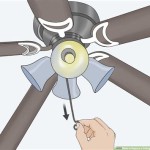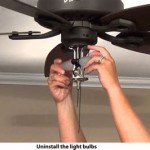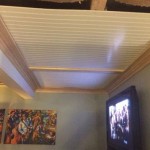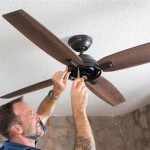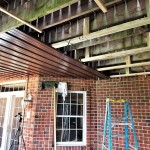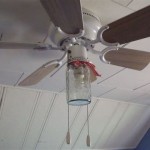How to Install a Ceiling Air Diffuser
Installing a ceiling air diffuser is a common task for homeowners looking to improve the ventilation and comfort of their living spaces. A well-installed diffuser ensures consistent airflow, reduces drafts, and contributes to overall energy efficiency. This article provides a comprehensive guide to installing a ceiling air diffuser, covering the necessary tools, preparatory steps, the installation process itself, and troubleshooting common issues.
Prior to installation, it is crucial to understand the function and types of air diffusers. An air diffuser distributes conditioned air, whether heated or cooled, evenly throughout a room. Different designs are available, each offering specific advantages in terms of airflow pattern and aesthetic appeal. Common types include round, square, and linear diffusers, with variations in baffle design and adjustable features. Selecting the right diffuser depends on the room size, ceiling height, and desired airflow pattern. Consult the manufacturer's specifications and local building codes to ensure compliance.
Safety is paramount during any DIY project, including air diffuser installation. Before commencing work, turn off the power to the HVAC system at the circuit breaker to avoid electrical hazards. Wear appropriate safety gear, such as safety glasses and gloves, to protect against debris and sharp edges. If working at height, use a stable ladder and ensure proper footing. If unsure about any aspect of the installation process, consult a qualified HVAC professional.
Preparing for Air Diffuser Installation
Proper preparation is essential for a smooth and efficient installation process. Begin by gathering all the necessary tools and materials. This includes the new air diffuser, a screwdriver (both Phillips and flathead), a measuring tape, a pencil, a drill with appropriate drill bits, safety glasses, gloves, a ladder, and potentially a drywall saw if modifications to the ceiling are required. Having these items readily available will minimize interruptions during the installation.
Next, inspect the existing ceiling opening or ductwork where the new diffuser will be installed. Check for any obstructions, such as wiring, plumbing, or insulation. Measure the dimensions of the opening to ensure the new diffuser is compatible in size. If the opening is too small, it may be necessary to enlarge it using a drywall saw. If the opening is too large, filler material may be needed to create a secure fit. Careful measurement and inspection at this stage will prevent problems later in the installation.
Identify the type of mounting system your new air diffuser uses. Some diffusers are designed to be mounted directly to the ductwork using screws or clips, while others require a mounting frame or collar. Familiarize yourself with the manufacturer's instructions for your specific diffuser model. Understanding the mounting mechanism will simplify the installation process and ensure a secure and stable attachment.
Clean the ductwork and surrounding ceiling area of any dust, debris, or old sealant. This will improve the adhesion of any new sealant or tape used during the installation. Use a vacuum cleaner or damp cloth to remove any loose particles. A clean surface ensures a better seal and prevents contaminants from entering the airflow.
Installing the Air Diffuser
With the preparation complete, the installation process can begin. If replacing an existing air diffuser, carefully remove the old unit. Disconnect any screws, clips, or other fasteners holding it in place. Gently pull the diffuser away from the ceiling, taking care not to damage the surrounding drywall. Dispose of the old diffuser responsibly.
Position the new air diffuser in the ceiling opening, ensuring it is aligned correctly and flush with the ceiling surface. If the diffuser requires a mounting frame or collar, install it first according to the manufacturer's instructions. The frame should be securely attached to the ductwork or ceiling structure to provide a stable base for the diffuser.
Attach the diffuser to the mounting frame or directly to the ductwork using the appropriate screws or clips. Ensure the fasteners are tightened securely, but avoid over-tightening, which could damage the diffuser or the surrounding ceiling. Check that the diffuser is level and properly aligned. Use a level to verify the horizontal and vertical alignment, making adjustments as needed.
If gaps exist between the diffuser and the ceiling, apply a bead of sealant around the perimeter to create an airtight seal. This will prevent air leakage and improve the efficiency of the HVAC system. Use a paintable sealant that matches the ceiling color for a seamless appearance. Smooth the sealant with a wet finger or tool for a clean finish.
Once the diffuser is securely installed and sealed, test the airflow by turning on the HVAC system. Observe the airflow pattern and adjust the diffuser baffles or vanes to achieve the desired distribution. Check for any unusual noises or vibrations, which could indicate a loose connection or obstruction. Make any necessary adjustments to optimize the airflow and ensure quiet operation.
Troubleshooting Common Issues
Despite careful preparation and installation, some common issues may arise. One frequent problem is insufficient airflow. This could be caused by a blockage in the ductwork, an undersized diffuser, or an improperly adjusted baffle. Check the ductwork for obstructions and ensure the diffuser is the correct size for the room. Adjust the baffles to direct the airflow more effectively.
Another common issue is excessive noise. This can be caused by a loose diffuser, vibrating ductwork, or turbulent airflow. Tighten any loose screws or clips and secure the ductwork to the ceiling joists. Adjust the diffuser baffles to reduce the velocity of the airflow. If the noise persists, consult a qualified HVAC professional.
Air leakage can also be a problem, leading to energy waste and reduced comfort. Check for gaps between the diffuser and the ceiling, and apply additional sealant as needed. Ensure the ductwork is properly insulated to minimize heat loss or gain. Inspect the duct connections for leaks and seal them with duct tape or mastic.
If the diffuser is not aesthetically pleasing or does not match the room's décor, consider replacing it with a different style or finish. There are many options available to suit various tastes and budgets. Choose a diffuser that complements the room's design and provides the desired airflow pattern. Replacing a diffuser is a relatively simple task that can significantly improve the look and feel of a room.
Preventative maintenance is crucial for ensuring the long-term performance of the air diffuser. Regularly clean the diffuser to remove dust and debris, which can restrict airflow and reduce efficiency. Inspect the diffuser for damage or wear, and replace any worn or broken parts. Periodically check the ductwork for leaks or obstructions and address them promptly. With proper care and maintenance, the air diffuser will provide reliable and efficient airflow for many years.

Ceiling Diffuser Mounting Methods Rickard Air Diffusion

Replacing A Heat Vent Register

How To Replace Your Ac Vent Covers Clf Services

Air Diffuser Installation

Lay In 5750 Ceiling Diffuser Installation

Everbilt 4 In Air Diffuser Df4whd The Home Depot

Truaire Smoothglide Ceiling Diffuser Damper Installation Retrofit Vent Cover Heating Cooling Hvac

Halton Sll Linear Slot Diffuser Ceiling Or Wall Installation

Ergovent Frameless Air Diffusers For Modern Interior

Filtered Air System For 2 X2 Diffuser Magnet Install With Safety Clips 1800ceiling
Related Posts

